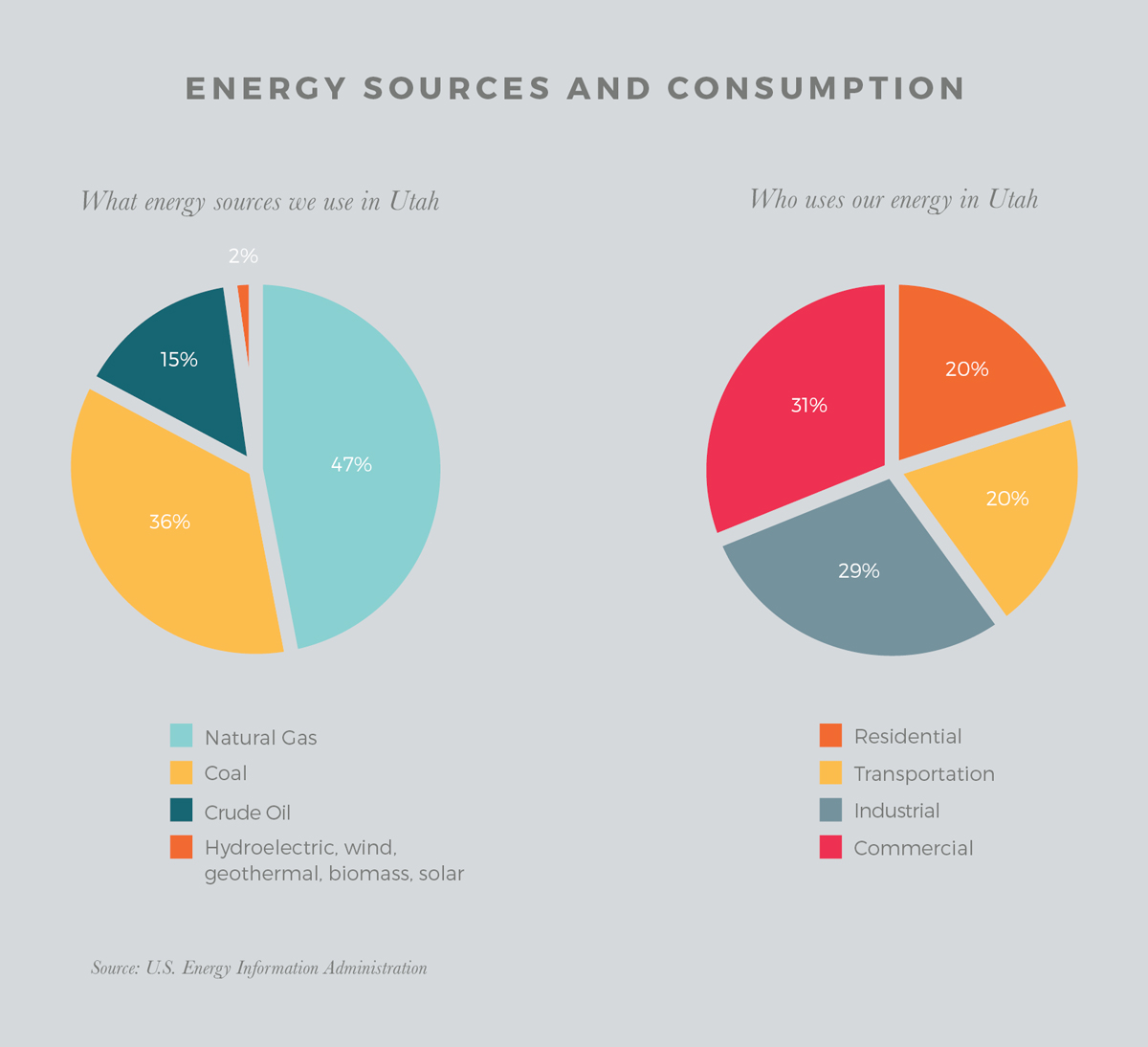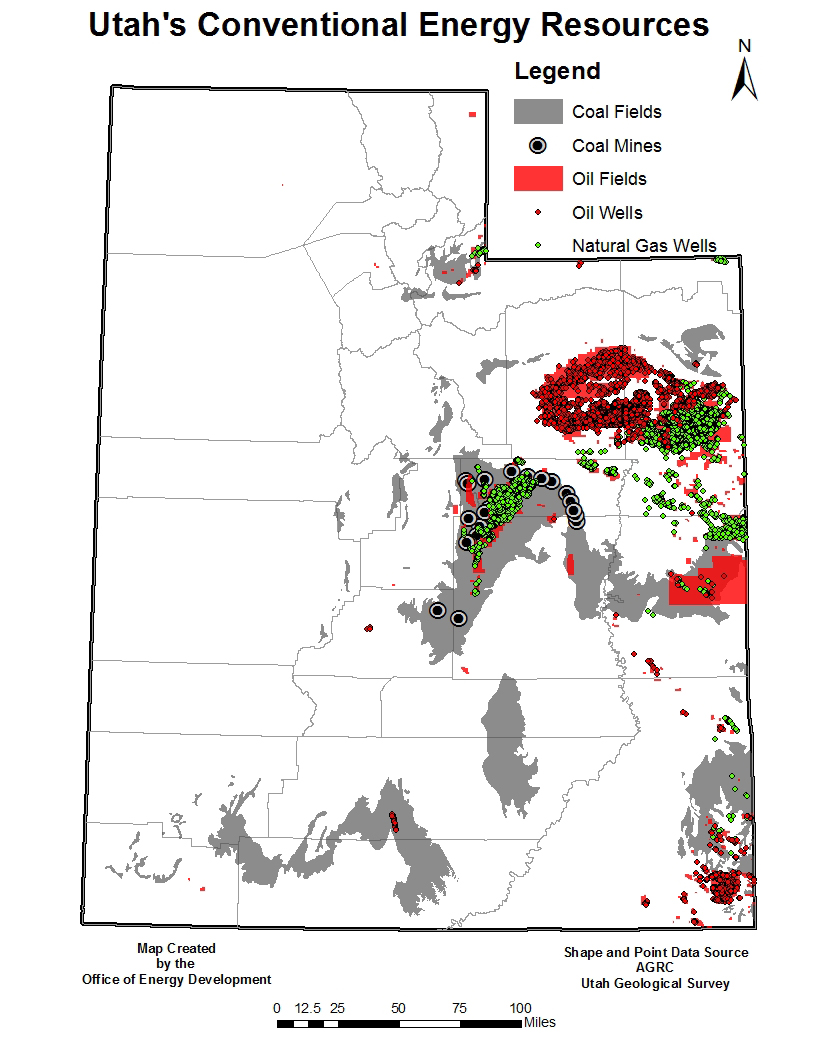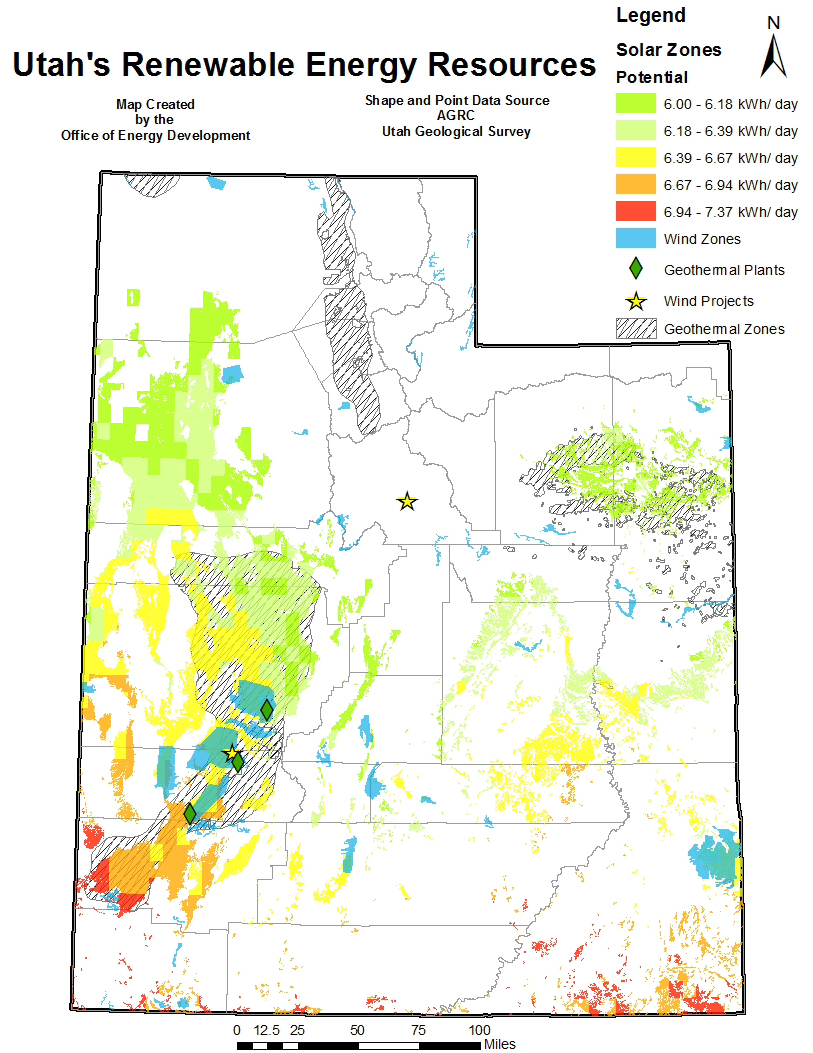Background:
Energy has wide-ranging impacts on Utah’s prosperity and quality of life. Energy expenses contribute to Utahns’ cost of living and their ability to save money or spend it on other needs. Air quality and environmental health are affected by energy production and consumption. If energy supplies are not reliable, energy disruptions are more likely to occur and have detrimental effects on Utahns’ businesses and lives. In addition, energy development and production can provide Utah with more jobs and tax revenue.
When it comes to energy, Utahns want to balance diversity in supply, cleaner sources, higher efficiency, and lower costs. Currently, Utah uses natural gas for home and water heating, while the majority of the electricity generation comes from coal. However, as electricity generation moves away from coal due to environmental regulations, use of natural gas will increase. Utahns would like to draw from a diverse supply of energy sources, including more renewable forms of energy, while still using natural gas to provide the base load. In addition to diversifying Utah’s energy supply, Utahns want to meet future energy needs, improve air quality, and save money through more conservation and energy efficiency in homes and buildings.
Utah is an energy-rich state. The state has reserves of natural gas and coal, as well as the potential to generate renewable energy supplies from solar, wind, and geothermal sources. Because Utah produces more energy than it consumes, surplus energy is exported. In 2011, 31% of all energy produced in Utah was exported, including 27% of the state’s generated electricity. The Utah Office of Energy Development estimates that in 2013, the market value of Utah’s energy sources and renewable electricity was $5.3 billion.
Most Utah communities are customers of Rocky Mountain Power and receive their electricity from power generation facilities in several states. Currently, the price of residential electricity in Utah is among the lowest in the nation at about 10.72 cents per kilowatt hour (kWh). In comparison, the price for electricity is 17.05 cents/kWh in California and 19.46 cents/kWh in New York. Our comparatively low energy costs keep household costs low and make the state attractive to businesses and industries.
As Utah’s population doubles, its energy needs will increase. Utah will likely use significantly more natural gas for electricity, for space and water heating in homes and commercial buildings, and for industrial uses. How much we diversify our energy mix and develop alternative resources will affect energy reliability, household costs, economic development, and, of course, the environment.

COAL
Today, most of Utah’s electricity is generated from coal-fired power plants, but Rocky Mountain Power is increasing the use of other energy sources like natural gas and renewables such as wind and solar. No coal-fired power plant has been built in Utah in the last quarter century. There are no plans to build any new coal plants, and those that exist are planned to be retired or renovated to operate on natural gas. Power plants fired by fossil fuels are currently the largest source of carbon-dioxide (CO2) emissions in the U.S., accounting for 38% of the U.S.’s total greenhouse gas emissions in 2013. Natural gas plants produce substantially less CO2 emissions than do coal plants.
NATURAL GAS
The natural gas industry in Utah is growing, partly because the electric power sector is transitioning away from coal. Utah ranked tenth in the nation in natural gas production in 2012. Of the natural gas consumed in Utah in 2013, the residential sector used 35%, electric power generation used 25%, the commercial sector used 21%, and the industrial sector used 19%. The price of natural gas in Utah remains low compared to the rest of the nation, with residential natural gas costing an average of $8.55 per thousand cubic feet in 2013.
RENEWABLES
Utah has excellent potential to develop energy from a variety of renewable sources, many of which are concentrated in the southern part of the state. Renewable energy sources currently provide a small percentage of the state’s total net electricity generation—less than 4%—but Utah has a voluntary Renewable Portfolio Standard, which says that by 2025, 20% of retail electricity sales should come from cost-effective, renewable sources.
- Utah has great solar resources, particularly in the southern part of the state. Today, solar energy is primarily produced through distributed generation (meaning it is made at the same site it is used) in the form of solar panels on homes and other buildings. Though solar power currently represents a small fraction of Utah’s electricity generation, there is significant potential for larger, utility-scale projects. The Bureau of Land Management has identified three solar energy zones suitable for energy production in Beaver and Iron Counties.
- Utah has several utility-scale wind projects. The best wind resources are concentrated in the southwest, but other locations scattered throughout the state have good, though limited, potential to produce wind energy.
- Utah is one of just six states with developable, utility-scale geothermal resources. Utah currently has about 70 megawatts of geothermal capacity installed. Drilling to confirm that the resources can be developed into energy could be expensive, however, so future development may be modest.
- While hydroelectric facilities currently generate the largest percentage of renewable energy used in Utah, new hydro projects are unlikely to be developed further because of environmental concerns. However, there is some potential for small “micro-hydro” projects to generate power in canals, water lines, or other water sources.
NUCLEAR
The Utah Office of Energy Development is evaluating the state’s potential to produce nuclear energy, while considering factors such as safety, water needs, waste disposal, size of the plant, rail access, transportation of spent nuclear fuel, and public perception.




